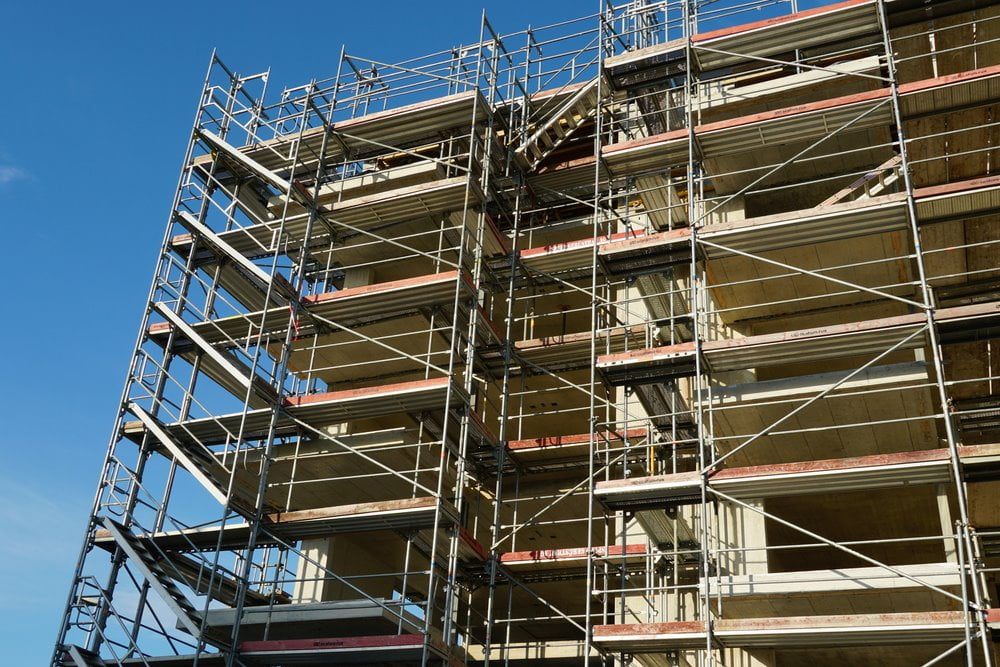Workplace safety is a top priority across all industries, especially in construction and maintenance, where employees often operate at elevated heights. One commonly asked question is: you must have a safe way to access a scaffold over ____ feet? According to safety regulations, you must have a safe way to access a scaffold over 2 feet, which underscores the importance of proper access equipment and procedures for any elevated worksite.
This may surprise some, as many people assume safety requirements begin at greater heights. However, even a fall from just a few feet can result in serious injury. This article will provide a detailed overview of scaffold access requirements, the reasoning behind the 2-foot rule, OSHA regulations, common access methods, and best practices for safe scaffold usage. Whether you’re a site supervisor, safety officer, or worker, understanding this guideline is critical to preventing workplace accidents and maintaining compliance with safety standards.
Understanding Scaffold Access Regulations
Why 2 Feet Matters
Falls are a leading cause of injury in construction. OSHA (Occupational Safety and Health Administration) has established that any scaffold more than 2 feet above a lower level requires a safe means of access. This threshold reflects evidence showing that falls from even modest heights can cause injuries, especially when workers are carrying tools or navigating complex structures.
OSHA Requirements
According to OSHA’s standard 29 CFR 1926.451(e), employers must provide safe access to scaffolds when platforms are more than 2 feet above or below a point of access. The regulation also outlines acceptable methods and configurations for safe scaffold entry and exit.
Acceptable Methods for Scaffold Access
Providing safe access isn’t just a formality—it’s a legal and safety requirement. Here are common methods used to safely access scaffolds above 2 feet:
1. Ladders
- Integral Scaffold Ladders: Built into the scaffold structure
- Portable Ladders: Must be secured and extend at least 3 feet above the landing
2. Stair Towers
- Preferred for large scaffold systems or when frequent access is needed
- Provide greater stability and reduce fatigue when climbing
3. Ramps and Walkways
- Must be secured, inclined properly, and have guardrails where necessary
4. Personal Fall Protection Systems
- When no physical access system is feasible, fall arrest systems must be used
Secondary Safety Measures and Compliance
Guardrails and Toeboards
Beyond access, OSHA also requires that elevated platforms be equipped with:
- Guardrails for platforms over 10 feet
- Toeboards to prevent tools or materials from falling
These additions help prevent falls and falling object hazards.
Training Requirements
Employers are responsible for training all workers on:
- Scaffold-specific hazards
- Proper climbing techniques
- Emergency procedures related to scaffold use
Common Violations and How to Avoid Them
Many citations and injuries stem from failing to follow basic scaffold access rules. Here are the most common mistakes:
1. Improper Use of Ladders
Ladders placed on unstable ground or not secured can lead to falls. Always use ladders designed for scaffold access.
2. Jumping Between Levels
Workers should never jump between scaffold levels or from the scaffold to another surface. This violates regulations and increases injury risk.
3. Climbing Scaffold Frames
Unless specifically designed for climbing, scaffold frames should not be used as ladders.
4. Lack of Maintenance
Access systems, including ladders and stairs, must be inspected daily for wear, damage, or obstruction.
Scaffold Access Safety Checklist
To ensure compliance and safety, refer to the following checklist:
- ✅ Scaffold platform is over 2 feet high
- ✅ A safe access method (ladder, stair, ramp) is in place
- ✅ Access equipment is stable and secured
- ✅ Guardrails and fall protection are installed if applicable
- ✅ Workers have been trained in scaffold safety
- ✅ Daily inspections are completed and documented
- ✅ Access points are free of obstructions and hazards
This checklist can help supervisors and workers maintain a consistent, safety-focused approach.
Real-World Examples of Scaffold Accidents
Understanding the importance of the 2-foot rule becomes even clearer when considering real-world incidents. Many injuries occur when workers assume a short height is safe without proper access. Examples include:
- A worker breaking an ankle after jumping from a 3-foot scaffold without a ladder
- A serious head injury caused by slipping on a wet scaffold ramp
- Legal fines imposed on a contractor who allowed access via scaffold framing
These incidents underscore the importance of consistent safety enforcement—even at lower heights.
The Importance of Site-Specific Planning
Every job site is different, and so are the scaffolding needs. Proper planning includes:
- Conducting a hazard assessment before setup
- Choosing the right scaffold and access method for the environment
- Accounting for weather conditions, surface stability, and traffic flow
- Ensuring that equipment is appropriate for the task and maintained
Effective planning not only ensures compliance but also improves efficiency and worker confidence.
Frequently Asked Questions
How high can a scaffold be before fall protection is required?
Fall protection is required when working on a scaffold more than 10 feet above a lower level, according to OSHA standards.
Can I use any ladder to access a scaffold?
No, only ladders that meet OSHA guidelines and are properly secured should be used.
Are temporary or makeshift access systems allowed?
No, makeshift systems are prohibited. Only OSHA-compliant access methods are permitted.
Is the 2-foot rule applicable in all industries?
Yes, the 2-foot safe access requirement applies universally across industries where scaffold use is governed by OSHA.
Conclusion
To answer the original question: you must have a safe way to access a scaffold over 2 feet. This requirement is rooted in federal safety standards and is designed to prevent the kinds of injuries and fatalities that can result from seemingly minor falls. Whether using ladders, stairs, or ramps, safe and stable scaffold access is non-negotiable.
Employers must ensure their job sites comply with OSHA standards, train their workers effectively, and inspect equipment regularly. Taking these steps not only ensures legal compliance—it saves lives. If you’re responsible for scaffold setup or oversight, now is the time to evaluate your site and make safety a priority.

